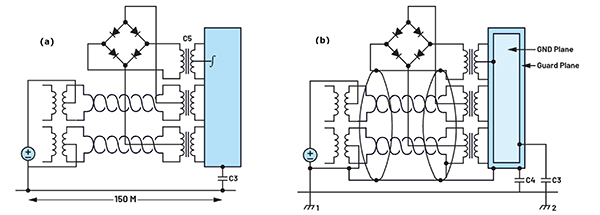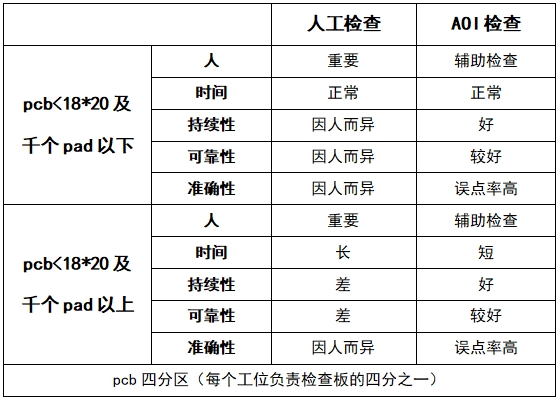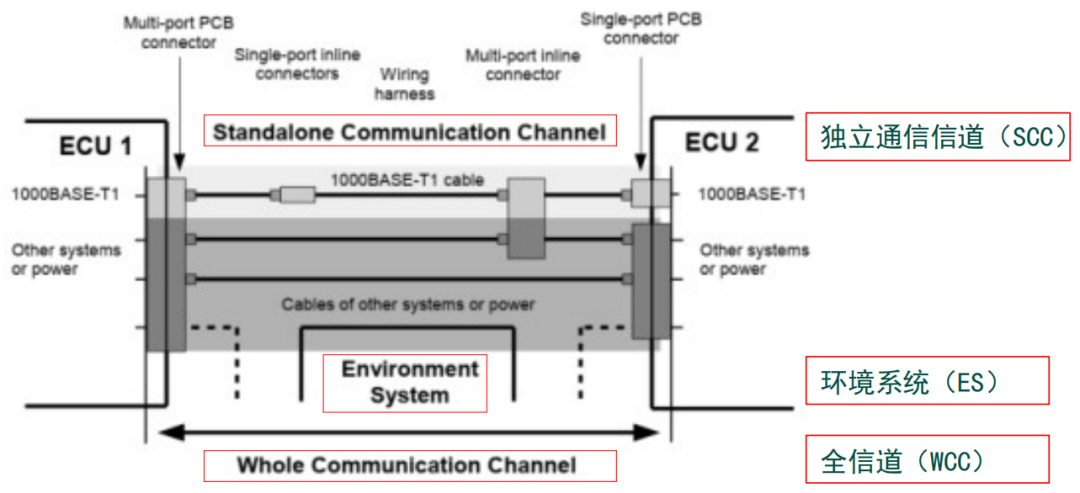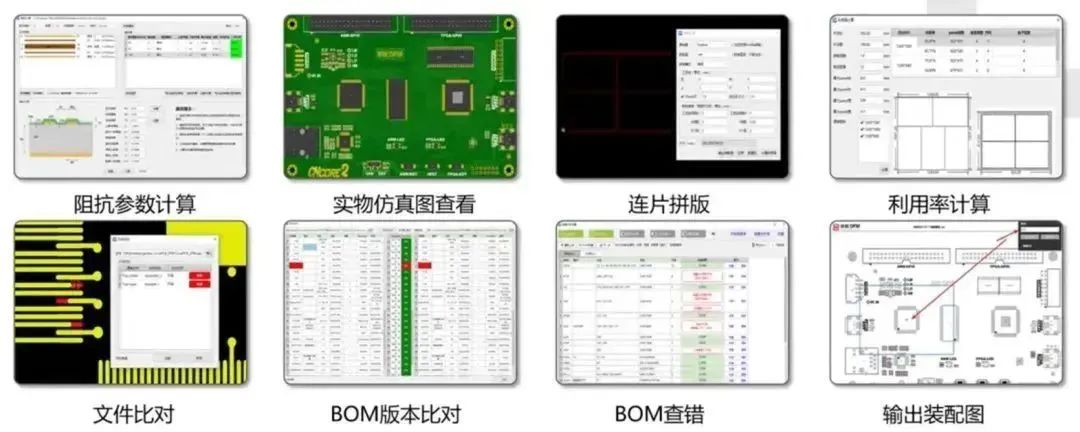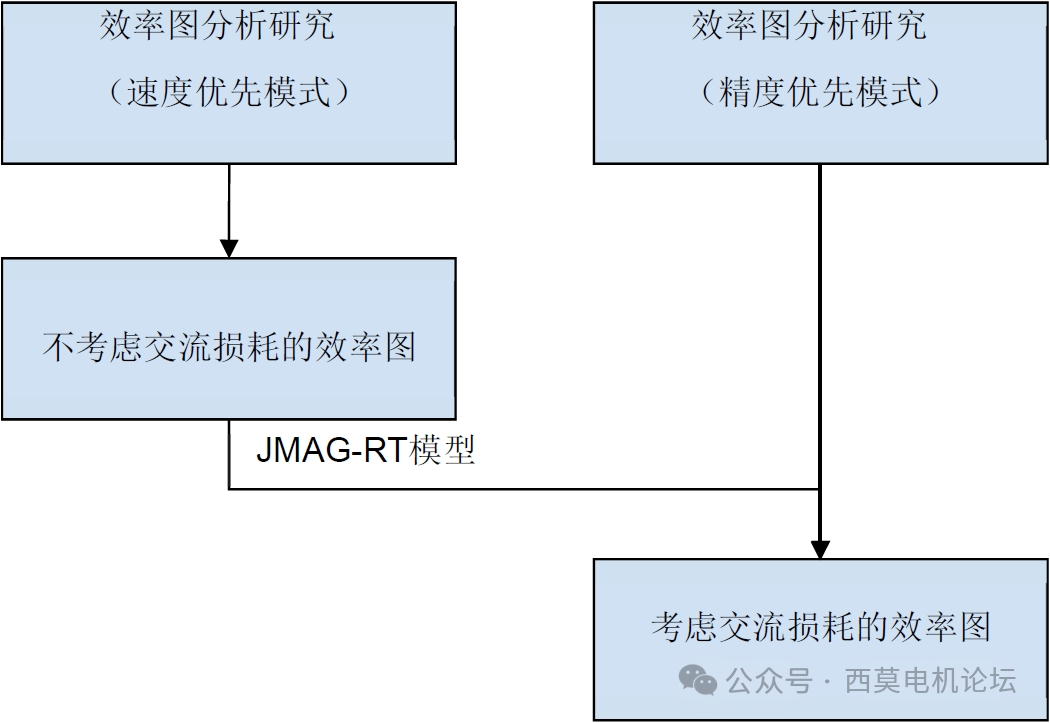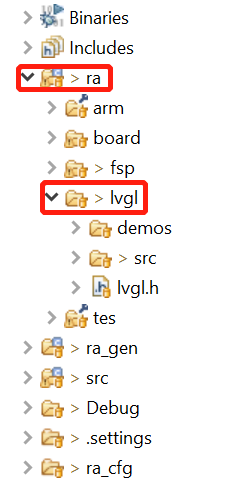文章转自ADI官网,版权归属原作者一切
Making accurate high-speed time-domain measurements can be challenging, but finding information that will help improve one’s techniques shouldn’t be. Understanding the basics of oscilloscopes and probes is always helpful, but a few extra tricks of the trade and some good old-fashioned commonsense engineering can be employed to help yield quick and accurate results. The following are some tips and techniques I’ve accumulated over the past 25 years. Incorporating even a few of these into your measurement kit could help improve your results.
Simply grabbing a scope off the shelf and a probe from the drawer won’t do for high-speed measurements. When choosing the right scope and probe for high-speed measurement, first consider: signal amplitude, source impedance, rise time, and bandwidth.
Selecting Oscilloscopes and Probes
There are hundreds of oscilloscopes available, ranging from very simple portable models to dedicated rack-mount digital storage scopes that can cost hundreds of thousands of dollars (some high-end probes alone can cost upwards of $10,000). The variety of probes that accompany these scopes is also quite impressive, including passive, active, current-measuring, optical, high-voltage, and differential types. It is beyond the scope of this article to provide a complete and thorough description of each and every scope and probe category available, so we will focus on scopes for high-speed voltage measurements utilizing passive probes.
The scopes and probes discussed here are used to measure signals characterized by wide bandwidths and short rise times. Besides these specifications, one needs to know about the circuit’s sensitivities to loading—resistive, capacitive, and inductive. Fast rise times can become distorted when high-capacitance probes are used; and in some applications the circuit may not tolerate the presence of the probe at all (for example, some high-speed amplifiers will ring when capacitance is placed on their output). Knowing the circuit limitations and expectations will help you to select the right combination of scope and probe and the best techniques for using them.
To start, the signal bandwidth and rise time will limit the scope choices. A general guideline is that scope and probe bandwidth should be at least three to five times the bandwidth of the signal being measured.
Bandwidth
Whether the signal being measured occurs in an analog or a digital circuit, the scope needs to have enough bandwidth to faithfully reproduce the signal. For analog measurements, the highest frequency being measured will determine the scope bandwidth. For digital measurements, it is usually the rise time—not the repetition rate—that determines the required bandwidth. The bandwidth of the oscilloscope is characterized by its –3 dB frequency, the point at which a sine wave’s displayed amplitude has dropped to 70.7% of the input amplitude, that is
 |
(1) |
It is important to ensure that the oscilloscope has sufficient bandwidth to minimize errors. Measurements should never be made at frequencies near the oscilloscope’s –3 dB bandwidth, as this would introduce an automatic 30% amplitude error in a sine-wave measurement. Figure 1 is a convenient plot showing typical derating of amplitude accuracy vs. the ratio of the highest frequency being measured to scope bandwidth.
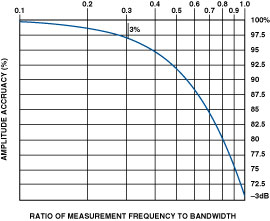
For example, a 300 MHz scope will have up to 30% error at 300 MHz. In order to keep errors below the 3% mark, the maximum signal bandwidth that can be measured is about 0.3 × 300 MHz, or 90 MHz. Stated another way, to accurately measure a 100 MHz signal (<3% error), you need at least 300 MHz of bandwidth. The plot in Figure 1 illustrates a key point: to keep amplitude errors reasonable, the bandwidth of the scope and probe combination should be at least three to five times the bandwidth of the signal being measured. For amplitude errors to be less than 1%, the scope bandwidth needs to be at least five times the signal bandwidth.
For digital circuits, rise time is of particular interest. To ensure that the scope will faithfully reproduce rise times, the expected or anticipated rise time can be used to determine the bandwidth requirements of the scope. The relationship assumes the circuit responds like a single-pole, low-pass RC network, as shown in Figure 2.
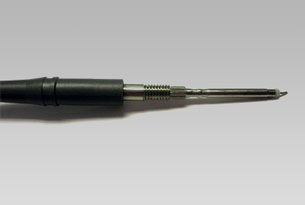
In response to an applied voltage step, the output voltage can be calculated using Equation 2.
 |
(2) |
The rise time in response to a step is defined as the time it takes for the output to go from 10% to 90% of the step amplitude. Using Equation 2, the 10% point of a pulse is 0.1 RC and the 90% point is 2.3 RC. The difference between them is 2.2 RC. Since the –3 dB bandwidth, f, is equal to 1/(2πRC), and the rise time, tr, is 2.2 RC,
 |
(3) |
So, with a single-pole probe response, one can use Equation 3 to solve for a signal’s equivalent bandwidth, knowing the rise time. For example, if a signal’s rise time is 2 ns, the equivalent bandwidth is 175 MHz.
 |
(4) |
To keep errors to 3%, the scope-plus-probe bandwidth should be at least three times faster than the signal being measured. Therefore a 600 MHz scope should be used to accurately measure a 2 ns rise time.
Probe Anatomy
Given their simplicity, probes are quite remarkable devices. A probe consists of a probe tip (which contains a parallel RC network), a length of shielded wire, a compensation network, and a ground clip. The probe’s foremost requirement is to provide a noninvasive interface between the scope and the circuit—disturbing the circuit as little as possible, while allowing the scope to render a near-perfect representation of the signal being measured.
Probes got their start back in the days of vacuum tubes. For measurements at the grids and plates, a high impedance was required to minimize loading of the signal node. This principle is still important today. A high-impedance probe will not significantly load the circuit, thus providing an accurate picture of what is truly going on at the measurement node.
In my experience in the lab, the most commonly used probes are 10× and 1× passive probes; 10× active FET probes are a close second. The 10× passive probe attenuates the signal by a factor of 10. It has 10M ohm input impedance and 10 pF typical tip capacitance. The 1× probe, with no attenuation, measures the signal directly. It has 1M ohm input impedance, and tip capacitance as high as 100 pF. Figure 3 shows a typical schematic for a 10×, 10M ohm probe.

RP (9M ohm) and Cp are in the probe tip, R1 is the scope input resistance, and C1 combines the scope input capacitance and the capacitance in the compensation box of the probe. For accurate measurements, the two RC time constants (RpCp and R1C1) must be equal; imbalances can introduce errors in both rise time and amplitude. Thus, it is extremely important to always calibrate the scope and probe prior to making measurements.
Calibration
One of the first things that should be done after acquiring a working scope and probe is to calibrate the probe to ensure that its internal RC time constants are matched. Too often this step is skipped, as it is seen as unnecessary.
Figure 4 shows how to properly connect the probe to the probe compensation output of the scope. Calibration is accomplished by turning the adjustment screw on the compensation box with a nonmagnetic adjustment tool until a flat response is achieved.
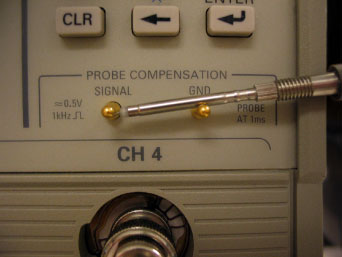
Figure 5 shows the waveforms produced by a probe that is undercompensated, overcompensated, and properly compensated.
Note how an undercompensated or overcompensated probe can introduce significant errors in rise time and amplitude measurements. Some scopes have built-in calibrations. If your scope has one, make sure you run it before making measurements.
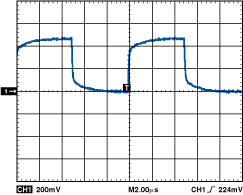
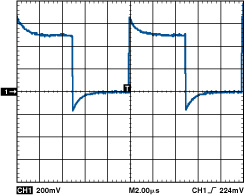
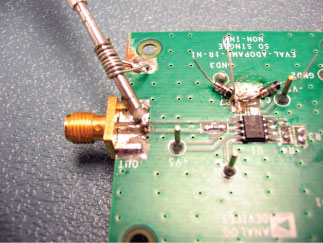
Figure 5. Probe compensation: a) undercompensated. b) overcompensated. c) properly compensated.



